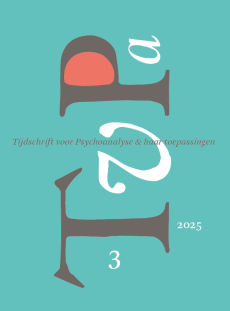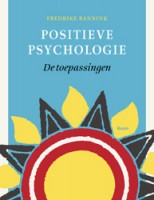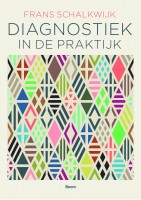Over de geschiedenis van de kinderanalytische opleiding in Nederland
Summary
Childanalytic training in the Netherlands began in 1966 and today may be considered to have attained the same quality and level as adult training. This article is an account of how this has come about. Internationally, childanalytic training has a sound reputation, but the Dutch Psychoanalytical Society has unfortunately not succeeded in obtaining the same rights for childanalysts (who are called ‘special’ members in the Dutch Society) in the IPA as those enjoyed by members trained in adult analysis. Further, members of the Dutch Psychoanalytical Society who have not become training analysts in the course of their adult training are ineligible for the task of supervising childanalytic cases. This situation may have changed, however, since this article was submitted.
Literatuur
- Aichhorn, A. (1925), Verwahrloste Jugend, Psychoanalytische Verlag, Wenen/Leipzig.
- Bornstein, B. (1945), Clinical Notes on Child Analysis. The Psychoanalytic Study of the Child 1, p. 151-166.
- Edgcumbe, R. (1970), The Development of Freud’s Instinct Theory, 1894-1939. In: H. Nagera (ed.) The Hampstead Clinic Psychoanalytic Library, vol. III: Basic Psychoanalytic Concepts on the Theory of Instincts. George Allen and Unwin, Londen, p. 23-49.
- Freud, A. (1922), Beating fantasies and daydreams. In: The Writings of Anna Freud I. International Universities Press, Madison CT, p. 137-157
- Freud, A. (1923), A hysterical symptom in a child of two years and three months. In: The Writings of Anna Freud I. International Universities Press, New York, p. 158-161.
- Freud, S. (1909), Analysis of a phobia in a five-year-old boy. Standard Edition Vol.10. Hogarth Press, Londen, p. 3-149.
- Geerts, A. (1980), Verwijzen en behandelen van kinderen en hun ouders; enige overwegingen voortgekomen uit de praktijk. In: E.C.M. Frijling-Schreuder e.a. (Red.), Psychoanalytici aan het woord. Van Loghum Slaterus, Deventer, p.258-263.
- Hall, J. Waelder (1935), The analysis of a case of night terror. In: The Psychoanalytic Study of the Child 2, p. 189-227.
- Hug-Hellmuth, H.V. (1920), Child psychology and education. The International Journal of Psycho-Analysis 1, p. 316-323.
- Hug-Hellmuth, H.V. (1921), On the technique of childanalysis. The International Journal of Psycho-Analysis 2, p. 287-305.
- Kennedy, H.E. (1950), Cover memories in formation. The Psychoanalytical Study of the Child 5, p. 275-284.
- King, P.H.M. (1991), Background and development of the Freud-Klein Controversies in the British Psycho-Analytical Society. In: P. King en R. Steiner (Ed.), The Freud-Klein Controversies 1941-45. Tavistock/Routledge, Londen/New York, p. 9-36.
- King, P. en R. Steiner (Ed.) (1991), The Freud-Klein Controversies 1941-45. Tavistock/Routledge, Londen/New York.
- Klein, M. (1921), The Development of a child, In: The Works of Melanie Klein 1. Hogarth Press, Londen, p. 1-53.
- Klein, M. (1922), Inhibitions and Difficulties in Puberty. In: The Works of Melanie Klein 1, Hogarth Press, Londen, p. 54-58.
- Nagera, H. (1966), Early Childhood Disturbances, the Infantile Neurosis, and the Adulthood Disturbances. International Universities Press, New York.
- Oosterhuis, E. (1999), Is psychoanalytische preventie mogelijk? Tijdschrift voor Psychoanalyse, 5 (4), p. 198-210.
- Sandler, A.-M. (1998), Committee on Child and Adolescent Psychoanalysis (COCAP of the IPA): Interim Report.
- Sandler, J., en J. Bolland (1965), The Hampstead Psychoanalytic Index. Monograph no. 1 of the Psychoanalytic Study of the Child. International Universities Press, New York.
- Solnit, A.J. (1993), Training in Child Analysis. Inleiding uitgesproken op het IPA -congres te Amsterdam; niet gepubliceerd in deze vorm.
- Stern, D.N. (1985), The Interpersonal World of the Infant. Basic Books, New York.
- Thomas, R. e.a. (1966), Comments on some aspects of self and object representation in a group of psychotic children: an application of Anna Freud’s Diagnostic Profile. Psychoanalytic Study of the Child 21, p. 527-580.
 © 2009-2025 Uitgeverij Boom Amsterdam
© 2009-2025 Uitgeverij Boom Amsterdam
ISSN 1382-516x
De artikelen uit de (online)tijdschriften van Uitgeverij Boom zijn auteursrechtelijk beschermd. U kunt er natuurlijk uit citeren (voorzien van een bronvermelding) maar voor reproductie in welke vorm dan ook moet toestemming aan de uitgever worden gevraagd:
Behoudens de in of krachtens de Auteurswet van 1912 gestelde uitzonderingen mag niets uit deze uitgave worden verveelvoudigd, opgeslagen in een geautomatiseerd gegevensbestand, of openbaar gemaakt, in enige vorm of op enige wijze, hetzij elektronisch, mechanisch door fotokopieën, opnamen of enig andere manier, zonder voorafgaande schriftelijke toestemming van de uitgever.
Voor zover het maken van kopieën uit deze uitgave is toegestaan op grond van artikelen 16h t/m 16m Auteurswet 1912 jo. Besluit van 27 november 2002, Stb 575, dient men de daarvoor wettelijk verschuldigde vergoeding te voldoen aan de Stichting Reprorecht te Hoofddorp (postbus 3060, 2130 KB, www.reprorecht.nl) of contact op te nemen met de uitgever voor het treffen van een rechtstreekse regeling in de zin van art. 16l, vijfde lid, Auteurswet 1912.
Voor het overnemen van gedeelte(n) uit deze uitgave in bloemlezingen, readers en andere compilatiewerken (artikel 16, Auteurswet 1912) kan men zich wenden tot de Stichting PRO (Stichting Publicatie- en Reproductierechten, postbus 3060, 2130 KB Hoofddorp, www.cedar.nl/pro).
No part of this book may be reproduced in any way whatsoever without the written permission of the publisher.
Nieuwsbrief Boom Psychologie
Meld u nu aan en ontvang maandelijks de Boom Psychologie nieuwsbrief met aantrekkelijke aanbiedingen en de nieuwe uitgaven.
Aanmelden


